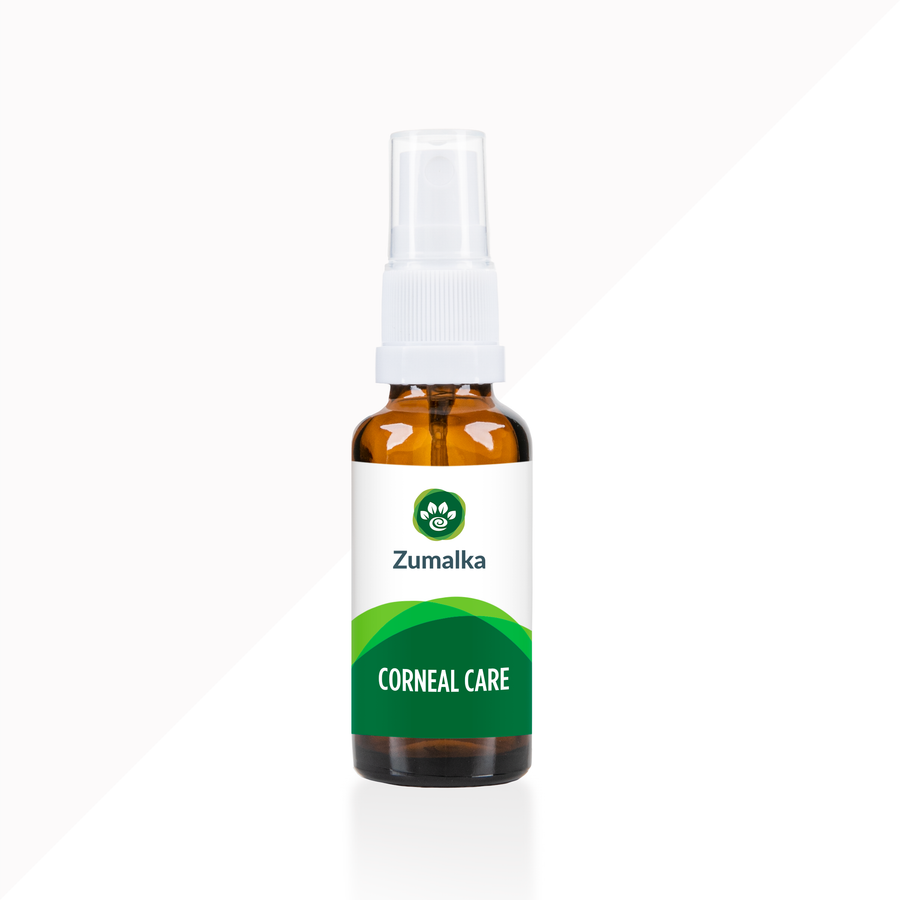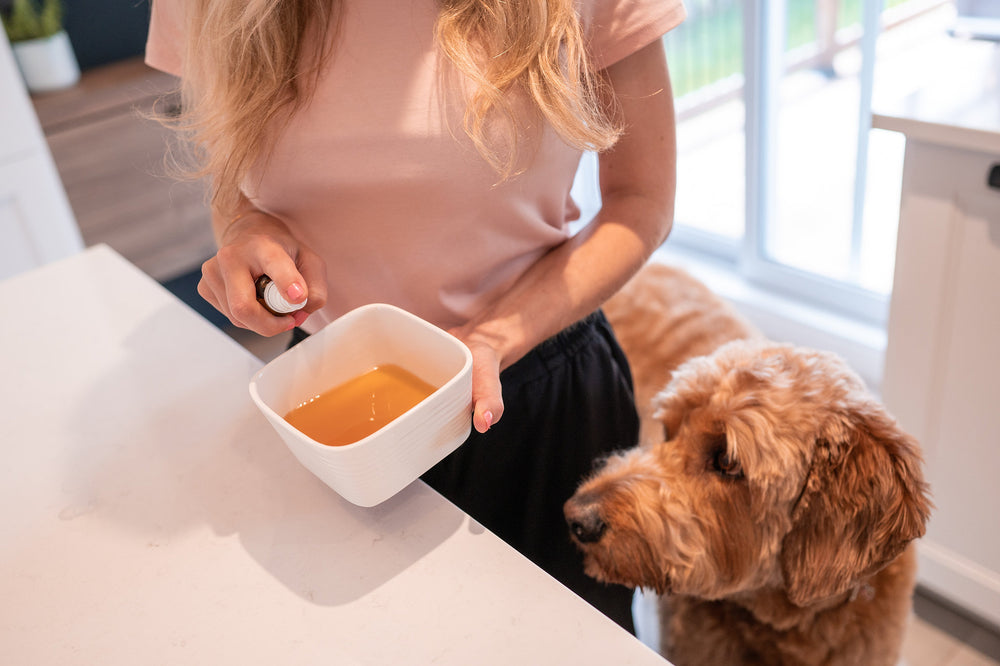Top 6 Vet-Approved Tips to Prevent Corneal Ulcers in Dogs
List of Contents
- What Exactly is a Dog Corneal Ulcer—and How Serious is It?
- How Can You Tell If Your Dog Has a Corneal Ulcer?
- Can Corneal Ulcers in Dogs Be Prevented?
- Dog Corneal Ulcers: When is It Time to See a Vet?
- Top Causes of Corneal Ulcers in Dogs Every Owner Should Know
- How Do Veterinarians Diagnose Corneal Ulcers in Dogs?
- How Do Vets Treat Corneal Ulcers in Dogs?
- Surgical Treatment for Corneal Ulcers in Dogs: What to Expect
- What are the Different Types of Corneal Ulcers in Dogs?
- Healing and Outlook for Canine Corneal Ulcers
- Conclusion
- FAQs
Your dog’s eyesight is precious and conditions like corneal ulcers can pose a serious risk. As a responsible pet parent, knowing how to prevent canine corneal ulcers is essential for protecting their vision.
In this article, we’ll cover not only how to prevent corneal ulcers in dogs but also their common causes, clinical signs, diagnosis, treatment options, and tips to support your dog’s recovery.
What Exactly is a Dog Corneal Ulcer—and How Serious is It?

The cornea is the transparent, protective layer covering the front of your dog’s eye, similar to a windowpane. It serves as a crucial barrier against dust, debris, harmful microbes, and UV radiation.
The cornea also helps refract light, allowing the lens to focus images properly on the retina. Additionally, it supports fluid balance within the eye, keeping it healthy and functioning correctly.
What happens when a dog has a corneal ulcer?
A corneal ulcer, or ulcerative keratitis, is a wound or erosion on the surface of a dog’s cornea involving damage to the outermost layer, the epithelium. In more advanced cases, the ulcer can extend into the deeper stromal layer, compromising the structural integrity of the eye.
When the ulcer reaches the innermost layer, Descemet’s membrane, it becomes a serious condition called a descemetocele. Descemetoceles carry a high risk of corneal rupture and potential vision loss.
Prompt veterinary care is crucial to prevent complications and preserve your dog’s eye health.
In summary, a corneal ulcer is an open wound on your dog’s eye that can vary from a minor surface scratch to a serious injury that threatens vision. Prompt diagnosis and treatment are essential to safeguard your dog’s eye health.
How Can You Tell If Your Dog Has a Corneal Ulcer?
Several telltale signs may indicate your dog has a corneal ulcer. If you notice any of the following symptoms, your pet may be dealing with this painful eye condition:
- Cloudy or hazy cornea due to fluid buildup
- Red or bloodshot eyes (ocular inflammation)
- Squinting or holding the eye closed (blepharospasm)
- Increased blinking or excessive tearing (epiphora)
- Eye discharge that may be clear, yellow, green, or bloody
- Sensitivity to light (photophobia)
- Pawing at the eye or rubbing the face on surfaces
- Visible third eyelid (elevated or protruding)
- Decreased appetite or lethargy in severe, painful cases
In severe cases, a noticeable hole or crater may form on the eye’s surface, and in extreme situations, corneal ulcers can result in blindness or even eye rupture. If you observe any of these signs, consult your veterinarian or a qualified pet homeopathy specialist immediately.
Can Corneal Ulcers in Dogs Be Prevented?
Yes, corneal ulcers in dogs can often be prevented with proper care and attention. By keeping a few key practices in mind, you can significantly reduce your dog’s risk of developing this painful eye condition. Important prevention tips include:
#1. When it comes to corneal ulcers, early detection can make all the difference.
Always address any signs of eye irritation or discomfort in your dog as soon as they appear. Early veterinary care and pet homeopathy guidance can help prevent minor issues from progressing into serious corneal ulcers. Prompt attention protects your dog’s eye health and can reduce the risk of complications.
#2. Keep your dog away from potential chemical irritants, as these can trigger or worsen corneal ulcers.
Keep your dog away from potential chemical irritants that could harm their eyes. Use caution when handling household cleaners or bathing your pet, making sure products don’t come into contact with their eyes. Protecting your dog from irritants is an easy step toward preventing corneal ulcers.
#3. Brachycephalic dog breeds need extra care and close monitoring due to their higher risk of corneal ulcers.
Short-nosed (brachycephalic) breeds like Pugs, Shih Tzus, and Bulldogs are more prone to corneal ulcers due to their prominent eyes. These dogs are at higher risk of eye injuries during walks or play. Be extra cautious around hedges, sharp objects, or rough play to help protect their eye health.
#4. Always supervise your dog’s interactions with other animals.
Supervise your dog’s interactions with other animals, especially cats. Rough play or aggression can lead to accidental eye injuries and increase the risk of corneal ulcers. Close monitoring helps prevent avoidable injuries and protects your dog’s vision.
#5. Managing underlying health issues can help prevent corneal ulcers in dogs.
Managing underlying conditions like dry eye or eyelid abnormalities is key to preventing corneal ulcers in dogs. Follow your veterinarian’s treatment plan to keep these issues under control. Consulting a qualified pet homeopath is also beneficial. Proper management reduces the risk of secondary ulcers and protects your dog’s eye health.
#6. Consider incorporating high-quality natural products into your home pet care routine to support your dog’s overall eye health.
Zumalka’s CORNEAL CARE OPTIMAL KIT is thoughtfully formulated to support and maintain corneal and overall eye health. This natural remedy is effective for various eye concerns, including redness, soreness, corneal congestion, and ulceration.
The CORNEAL CARE OPTIMAL KIT works in combination with several TONICPET supplements for enhanced results:
TONICPET #4 supports oxygenation throughout the body
TONICPET #12 helps maintain eye health and removes foreign particles
TONICPET #3 promotes detoxification by purifying the blood and eye tissues
TONICPET #5 supports the development of healthy eye tissue
Additionally, SILVERPET complements the formula by supporting the immune system and helping to target harmful bacteria and infections.
Dog Corneal Ulcers: When is It Time to See a Vet?

If your dog displays symptoms like eye redness, squinting, discharge, or excessive tearing, it’s important to reach out to your veterinarian promptly. Acting early can help prevent the ulcer from progressing or causing further complications.
Delaying treatment may lead to serious complications, such as infections or potential vision loss. An accurate and timely diagnosis supports more effective treatment and a quicker recovery. Following your veterinarian’s advice is essential to safeguard your dog’s eye health and overall wellness.
When considering natural remedies, it's important to consult a qualified pet homeopathy specialist for personalized guidance.
Top Causes of Corneal Ulcers in Dogs Every Owner Should Know
Knowing what causes corneal ulcers in dogs can help you stay one step ahead in protecting your pet’s eye health. Here are some of the most common causes every dog owner should keep in mind:
- Dry eye (Keratoconjunctivitis Sicca or KCS): Low tear production can cause the cornea to dry out, making it more vulnerable to irritation, injury, and ulceration.
- Trauma: A leading cause of corneal ulcers, trauma can result from cat scratches, contact with thorns or bushes, or self-inflicted injury from rubbing the eye due to irritation or discomfort.
- Infections: While more common in cats, bacterial or viral infections can still play a role in the development of corneal ulcers in dogs.
- Neurologic issues: Conditions that impair blinking can cause the cornea to dry out, increasing the risk of irritation and ulcer formation.
- Chemical irritation or burns: Exposure to shampoos, topical medications, or household cleaners can damage the cornea and lead to painful ulceration.
- Eyelid abnormalities: Issues such as entropion or ectopic cilia can cause ongoing irritation to the cornea, increasing the risk of chronic inflammation and ulcer development.
- Endocrine diseases: Conditions like diabetes, Cushing’s disease, and hypothyroidism can increase a dog’s susceptibility to corneal ulcers by affecting tear production, immunity, or healing ability.
- Corneal abnormalities: Conditions such as spontaneous chronic corneal epithelial defects (SCCED), which impair healing, and inherited epithelial dystrophy, common in breeds like Boxers, can increase the risk of persistent corneal ulcers.
- Foreign body injury: Debris like plant material, sand, or dirt can become trapped under the eyelid or on the cornea, leading to irritation, abrasions, and potential ulcer formation.
Being aware of what causes corneal ulcers in dogs empowers you to take preventive action. With the right knowledge, you can help keep your dog’s eyes healthy and reduce the risk of this painful condition.
How Do Veterinarians Diagnose Corneal Ulcers in Dogs?
Diagnosing a corneal ulcer in dogs starts with a thorough eye examination by your veterinarian. A key diagnostic method is fluorescein staining, a safe and non-invasive way to detect damage to the corneal surface.
The orange dye is applied to the eye’s surface to reveal any damage. If a corneal ulcer is present, the dye adheres to the injured area and glows bright green under a blue light, confirming the diagnosis.
Depending on the severity and duration of the corneal ulcer, your veterinarian may recommend additional diagnostic tests:
- A Schirmer tear test is often used to measure tear production and rule out dry eye.
- Tonometry, which measures intraocular pressure, can help detect conditions like glaucoma or uveitis, although it may be postponed in cases of deep ulcers to avoid the risk of rupture.
- For chronic, deep, or infected ulcers, your vet may perform a bacterial culture and cytology to identify the underlying cause and guide treatment.
Moreover, careful evaluation of the eyelids and surrounding structures is essential for identifying foreign objects, misplaced eyelashes, or anatomical abnormalities that may contribute to the ulcer.
These additional tests help your veterinarian make a precise diagnosis and develop an effective, customized treatment plan for your dog’s eye health.
How Do Vets Treat Corneal Ulcers in Dogs?

Treatment options for dog corneal ulcers vary based on the underlying cause, depth, and severity. Most cases are managed with medical therapy, though severe or non-healing ulcers may require surgical intervention.
Corneal repair gel containing hyaluronic acid is sometimes prescribed by veterinarians to support healing and protect the damaged eye surface. This gel forms a soothing barrier that promotes tissue repair and helps prevent further irritation.
Tear stimulants may be prescribed when dry eye contributes to a corneal ulcer. These medications help restore natural moisture to the eye and encourage tear production to support healing and protect the corneal surface.
Corneal ulcers are often very painful, making pain management a crucial part of treatment. Veterinarians may prescribe medications to reduce discomfort and improve healing outcomes:
- Topical antibiotics are essential for preventing or treating secondary bacterial infections, a common complication of corneal ulcers. These eye drops or ointments are typically applied every 4–6 hours, with increased frequency in more severe cases.
- Topical atropine helps ease pain from corneal ulcers by dilating the pupil and reducing muscle spasms in the eye. However, it may cause short-term light sensitivity and a bitter taste, sometimes leading to drooling, especially in cats and occasionally in dogs.
- Oral pain medications are often used alongside other treatments to manage discomfort from corneal ulcers. Options may include NSAIDs like carprofen, firocoxib, or meloxicam, as well as other pain relievers such as gabapentin or, in select cases, acetaminophen with codeine.
Anticollagenase medications are critical for treating melting ulcers, which occur when enzymes from bacteria or fungi begin to break down the corneal tissue. Treatment often involves applying the dog’s serum as eye drops to inhibit these destructive enzymes and support healing.
Lubricating eye drops or ointments help maintain moisture and comfort in the eye, especially when tear production is reduced. These products protect the corneal surface and support the healing process.
Surgical Treatment for Corneal Ulcers in Dogs: What to Expect
Surgical treatment may be required for deep, complicated, non-healing, or melting corneal ulcers. Procedures can include conjunctival grafts, corneal transplants, or other techniques to stabilize and protect the eye while it heals.
- Grid keratectomy or corneal debridement may be performed to treat indolent ulcers—superficial, slow-healing ulcers with a loose outer edge. These procedures gently remove the unhealthy outer corneal layer to encourage healing and epithelial adhesion.
- Conjunctival grafts involve surgically transferring tissue from the conjunctiva—the pink lining of the eyelid—to cover and support deep corneal ulcers. This technique provides essential blood supply to the damaged area, promoting faster and more effective healing.
- Surgical removal may be necessary when a foreign object becomes embedded in the cornea. Prompt removal helps prevent further damage, infection, and delays in healing.
- A third eyelid flap involves temporarily stitching the third eyelid over the cornea to serve as a natural bandage. This protective layer helps reduce irritation, support healing, and shield the eye from further trauma.
- For severe or advanced corneal ulcers, a transplant using donor corneal tissue may be an option. This procedure helps restore the integrity of the eye, protects against further damage, and may help preserve vision.
- Enucleation (removal of the eyeball by severing the optic nerve) is usually considered when the dog is blind, in pain, has severe corneal damage, or has a perforated cornea. Sometimes, this surgery is done when the owner cannot afford corneal surgery.
Supportive care plays a vital role in the healing process for dogs with corneal ulcers. Preventing self-inflicted injury is a critical part of the healing process, no matter the chosen treatment. To protect the eye, most dogs will need to wear an Elizabethan collar (e-collar) for the full duration of recovery, as advised by your veterinarian.
Follow-up visits are essential for tracking your dog’s recovery from a corneal ulcer. During these appointments, your veterinarian will typically use fluorescein dye to evaluate how well the ulcer is healing.
Mild ulcers may only require a recheck after about a week, but more severe cases often need more frequent monitoring. Always follow your veterinarian’s instructions closely, and never discontinue medications without their guidance.
Important Note: While topical anesthetics may be used during veterinary exams for diagnostic purposes, they are not intended for home use. These medications can be toxic to the cornea and may significantly delay healing if misused.
What are the Different Types of Corneal Ulcers in Dogs?
Corneal ulcers in dogs aren't a one-size-fits-all diagnosis—they can vary widely in type and severity. Veterinarians often categorize them by depth and appearance to determine the most effective course of treatment.
- Corneal erosion or abrasion refers to damage limited to the outermost epithelial layer of the cornea. These superficial ulcers typically heal quickly with appropriate treatment.
- A descemetocele is a severe corneal ulcer that extends down to Descemet's membrane—the final layer before the eye is at risk of rupturing. This condition is a true medical emergency requiring immediate veterinary intervention.
- An indolent ulcer, also known as a Spontaneous Chronic Corneal Epithelial Defect (SCCED), is a superficial corneal ulcer that doesn’t heal properly due to a loose or non-adhering epithelial edge. It’s commonly seen in older dogs and predisposed breeds such as Boxers and Poodles.
- A stromal ulcer involves damage that extends into the deeper stromal layers of the cornea. These ulcers are more serious than superficial ones and require more intensive treatment and monitoring.
- A melting ulcer is a rapidly worsening corneal ulcer caused by bacterial or fungal infections that release enzymes, breaking down the corneal collagen. This process gives the cornea a soft, “melting” appearance and requires urgent veterinary treatment.
Healing and Outlook for Canine Corneal Ulcers
The prognosis for corneal ulcers in dogs is generally favorable, particularly for superficial cases that receive prompt and appropriate treatment. Early intervention significantly increases the likelihood of full recovery and helps prevent complications.
Most simple corneal abrasions heal within a few days to a week with proper care. In contrast, deeper or more complex ulcers often require extended treatment, closer monitoring, and a longer healing period.
Adhering to your veterinarian’s guidance, including administering medications as directed and attending all follow-up visits, is key to a smooth recovery. Stay alert for signs of complications—like increased discomfort, eye discharge, or changes in the eye’s appearance—and reach out to your vet right away if anything seems concerning.
In some cases, blood vessels may grow across the cornea (a process called neovascularization) as part of the healing response. If these vessels are extensive and interfere with vision, your veterinarian may prescribe topical corticosteroids to reduce them, but only after confirming complete healing with a fluorescein stain, as using steroids too early can significantly hinder recovery.
Conclusion
Corneal ulcers are a frequently encountered and often painful eye issue in dogs. Prompt identification, veterinary diagnosis, and careful follow-through with treatment are key to ensuring a smooth recovery and protecting your dog’s eyesight.
Understanding the causes, spotting early signs, and following your veterinarian’s advice—or partnering with a pet homeopathy expert for natural care—can make a meaningful difference in your dog’s recovery and long-term eye health.
If you suspect your dog has an eye ulcer, seek veterinary care without delay—early treatment is critical. Consulting a pet homeopathy expert may also offer valuable complementary support during the healing process.
FAQs
Can a dog recover from a corneal ulcer?
Yes, dogs can recover from corneal ulcers, especially with early diagnosis and proper treatment. Most superficial ulcers heal quickly, while deeper or complicated cases may require intensive care and close veterinary monitoring. Pet homeopathy guidance can also help.
How do I treat an ulcer in my dog's eye?
To treat a dog’s eye ulcer, seek prompt veterinary care or pet homeopathy assistance. Treatment may include antibiotic drops, pain relief, tear stimulants, or surgery. Follow your vet’s instructions closely for proper healing and recovery.
How serious is a corneal ulcer?
Corneal ulcers in dogs can be serious, particularly if they are deep or left untreated, potentially leading to vision loss or eye rupture. Prompt veterinary care is crucial, and support from a qualified pet homeopath may also aid healing.
What does a corneal ulcer look like in a dog?
A corneal ulcer in a dog may appear as eye redness, excessive tearing, squinting, cloudiness, or a visible spot on the eye. Discomfort and light sensitivity are also common signs needing prompt care.
How to cure a dog's corneal ulcer at home?
Corneal ulcers should not be treated at home without veterinary guidance. Proper care may include vet-prescribed eye drops, pain relief, and supportive care. Consult your vet and consider natural remedies with a qualified pet homeopath.
How can I help my dog's eye heal?
To help your dog’s eye heal, follow your veterinarian’s treatment plan, use prescribed medications consistently, prevent eye rubbing with an e-collar, and attend follow-up visits. Natural remedies may help if guided by a qualified pet homeopath.
Can I give my dog antihistamines?
Some antihistamines are safe for dogs, but always consult your veterinarian before giving any medication. Ask your pet homeopath for guidance on natural alternatives. Dosage and type must be appropriate for your dog’s size, condition, and health history to avoid harm.
What eye drops are safe for dogs?
Only veterinarian-approved eye drops are safe for dogs. These may include lubricants, antibiotics, or anti-inflammatory drops, depending on the condition. Never use human eye drops without veterinary guidance, as they may cause harm.
What antibiotics treat corneal ulcers in dogs?
Antibiotics commonly used to treat corneal ulcers in dogs include gentamicin, tobramycin, ciprofloxacin, and ofloxacin. A veterinarian will choose the appropriate antibiotic based on the ulcer’s severity and potential infection risk.
How to tell if a dog's eye ulcer is getting worse?
Signs a dog’s eye ulcer is getting worse include increased redness, squinting, discharge, cloudiness, or a visible indentation on the eye. If symptoms worsen or don’t improve, seek immediate veterinary attention to prevent complications.
Can I ice my dog's eye?
You can apply a cold compress to your dog’s eye for short periods to reduce swelling, but always consult your veterinarian or pet homeopathy expert first. Never place ice directly on the eye or use it without guidance.
Can I use human eye drops on my dog?
You should not use human eye drops on your dog unless specifically directed by a veterinarian. Some ingredients can be harmful or worsen the condition. Always consult your vet for safe, dog-appropriate eye treatments.
What is the best home remedy for a dog's eye infection?
The best home remedy for a mild dog eye infection is gently cleaning the eye with a vet-approved saline solution. SILVERPET is also a gentle and helpful option. Always consult your veterinarian or a qualified pet homeopath before using natural treatments.
How to heal a dog's corneal ulcer naturally?
To support the natural healing of a corneal ulcer, consult a veterinarian and a qualified pet homeopath. Natural remedies like herbal drops or homeopathic solutions may complement care, but professional guidance is essential to avoid complications.
What is the 1/2/3 rule for dog corneal ulcers?
The 1/2/3 rule for corneal ulcers helps assess healing: if there's no improvement in 1 day, partial healing in 2 days, or complete healing in 3 days, re-evaluation by a veterinarian is needed.
What happens if a corneal ulcer doesn't heal in dogs?
If a corneal ulcer doesn't heal in dogs, it can worsen into a deep or melting ulcer, risking infection, vision loss, or eye rupture. Prompt veterinary evaluation is essential for advanced treatment and healing support.









Leave a comment